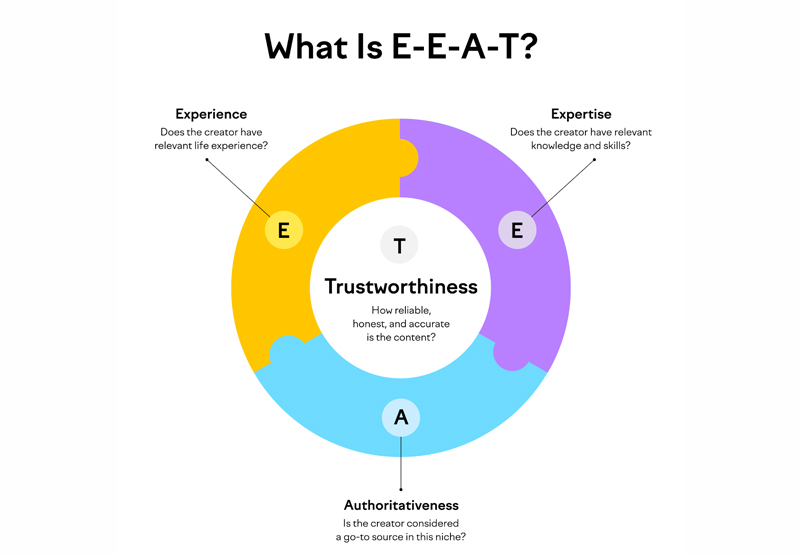History Of Google Algorithm
There is probably not a single person on the planet who has not heard of Google.
Also, there are very few people on the planet who are connected to the internet and don’t use Google every other day.
Google is in many ways like oxygen. We breathe it every day, without even knowing!
Google, founded in 1998 by Larry Page and Sergey Brin, has evolved from a search engine into a multifaceted technology leader.
Here are some intriguing facts about the company:
Humble Beginnings: Google’s first office was a rented garage in Menlo Park, California, mirroring the startup stories of other tech giants.
Original Name: Before becoming ‘Google,’ the search engine was called BackRub,’ reflecting its early focus on backlink analysis.
Data Storage Innovation: The company’s initial data storage system was constructed using LEGO bricks, housing ten 4 GB hard drives.
First Doodle: The inaugural Google Doodle, featuring a Burning Man stick figure, debuted on August 30, 1998, signaling the founders’ attendance at the festival.
Googol Inspiration: The name Google is a play on googol, the mathematical term for a 1 followed by 100 zeros, symbolizing the company’s mission to organize vast amounts of information.
Multilingual Support: Google Search is available in over 150 languages, including constructed and fictional ones like Esperanto and Klingon.
T-Rex Mascot: A life-size replica of a Tyrannosaurus rex named ‘Stan’ resides at Google’s headquarters, serving as a reminder to avoid extinction.
Goat Landscaping: To maintain its lawns, Google occasionally rents goats to naturally trim the grass, promoting an eco-friendly approach.
April Fools’ Tradition: Google is known for its elaborate April Fools’ Day pranks, such as the 2007 announcement of “Google TiSP,” a fictitious free broadband service delivered through toilets.
Acquisition Strategy: Since 2010, Google has averaged more than one company acquisition per week, expanding its technological and service portfolio.
These facts highlight Google’s innovative culture and its journey from a modest startup to a global technology powerhouse.
Google’s search algorithm has undergone numerous updates since its inception, evolving to provide more relevant and accurate search results. Here is a timeline of key updates and milestones in the history of Google’s algorithm:
- The Early Days (1996–1998)
BackRub (1996): Google started as a research project called BackRub at Stanford University, focusing on analyzing backlinks to determine the importance of websites.
PageRank (1998): Google founders Larry Page and Sergey Brin developed the PageRank algorithm, which ranked web pages based on the number and quality of links pointing to them. This was the foundation for Google Search.
- Early Algorithm Updates (2000–2009)
2000: Google introduced the AdWords platform, integrating sponsored links with organic search results.
2003 – Boston Update: The first named algorithm update, focused on quality and relevance.
2003 – Florida Update: Targeted keyword-stuffing practices, marking a significant crackdown on black-hat SEO.
- Major Milestones (2010–2015)
2010 – Caffeine Update: Improved indexing speed, enabling Google to deliver fresher results.
2011 – Panda Update: Focused on reducing low-quality content (e.g., content farms) and emphasizing high-quality, original content.
2012 – Penguin Update: Targeted manipulative link-building strategies like link farms and paid links.
2013 – Hummingbird Update: Revamped the algorithm to better understand natural language queries and user intent.
2014 – Pigeon Update: Improved local search results by better integrating Google’s traditional algorithm with local search factors.
2015 – Mobile-Friendly Update (Mobilegeddon): Prioritized mobile-friendly websites in mobile search results.
- The AI and Machine Learning Era (2016–Present)
2016 – RankBrain: Introduced machine learning to process search queries, improving Google’s understanding of user intent.
2017 – Fred Update: Targeted websites with low-quality, ad-heavy content.
2018 – Mobile-First Indexing: Shifted focus to mobile versions of websites for ranking and indexing.
2019 – BERT Update: Improved natural language understanding, especially for conversational and complex queries.
2021 – Core Web Vitals Update: Emphasized page experience metrics like loading speed, interactivity, and visual stability.
2022 – Helpful Content Update: Focused on promoting content created for humans rather than for search engines.
Ongoing Innovations
Google continues to refine its algorithms with advancements in AI, such as integrating generative AI in search (Search Generative Experience) and improving conversational search capabilities. These efforts aim to make search more intuitive and user-centric.







